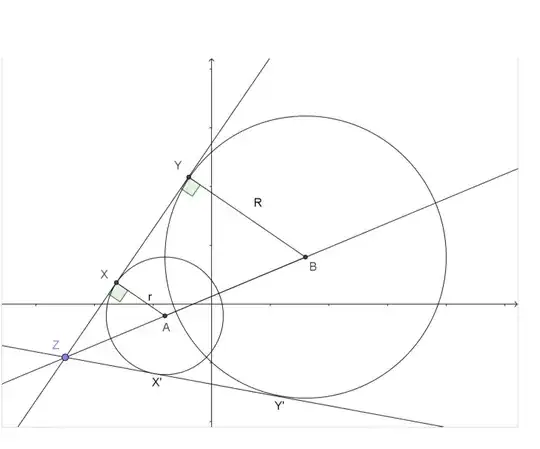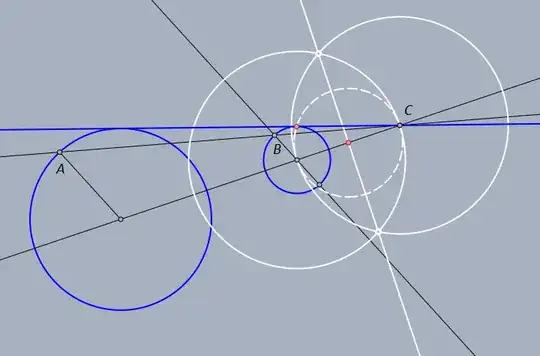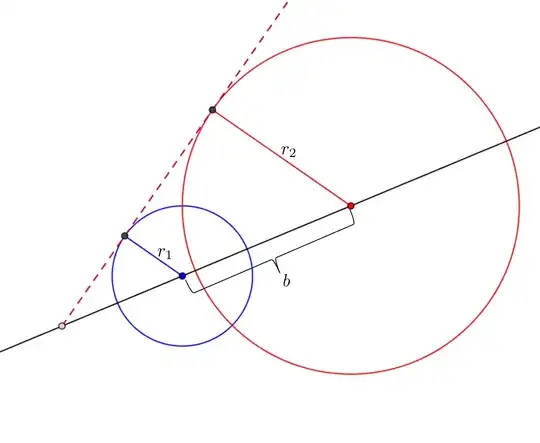I need to find the common tangents to the following circles:
$~~~~~~~~\mathscr C_1:~x^2+y^2+8x+2y-8=0~~~~~$ and $~~~~~\mathscr C_2:~x^2+y^2-16x-8y-64=0$
How could I go about this? I found a similar question on the site but for some reason the person asking didn't want to use calculus, which lead to some lengthy solutions. Is there an easy way to do so with calculus?
Also, if someone were given one of the common tangents, together with the facts that:
- Both circles pass through $(-4,4)$
- Their centres lie on $12y=5x+8$
Would these three things alone be sufficient to determine the equations of $\mathscr C_1$ and $\mathscr C_2$?



